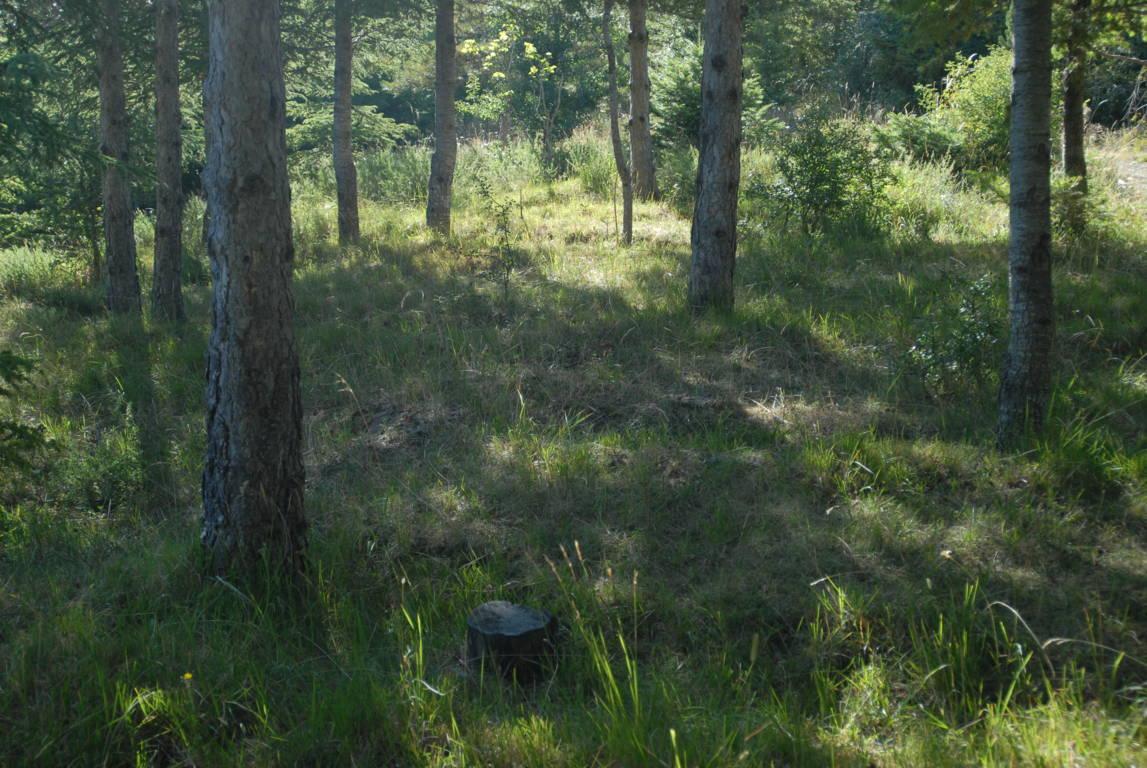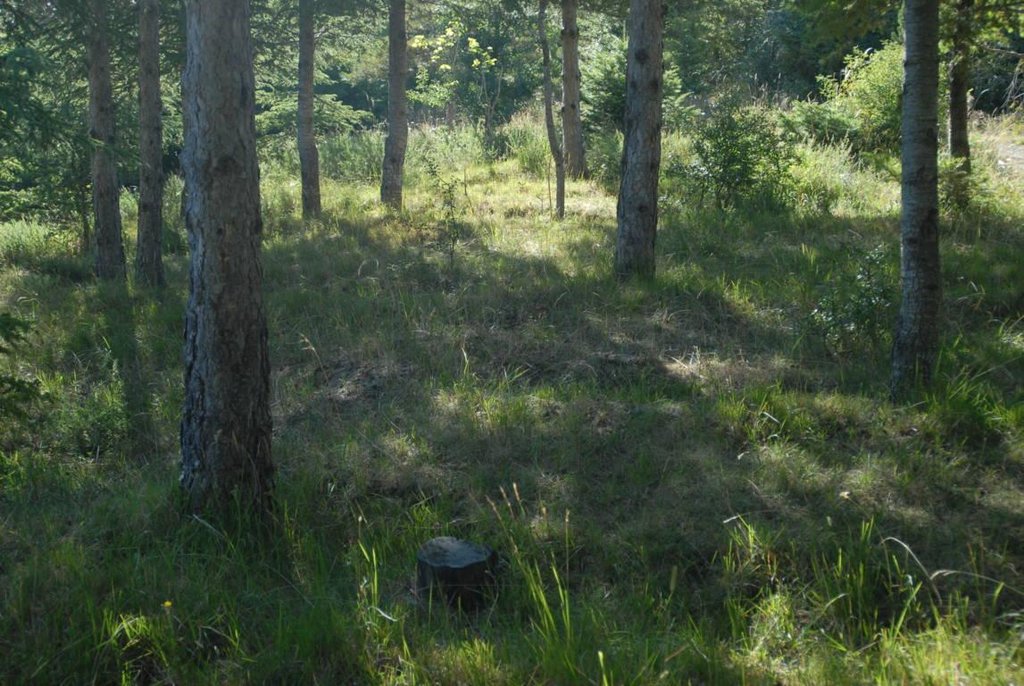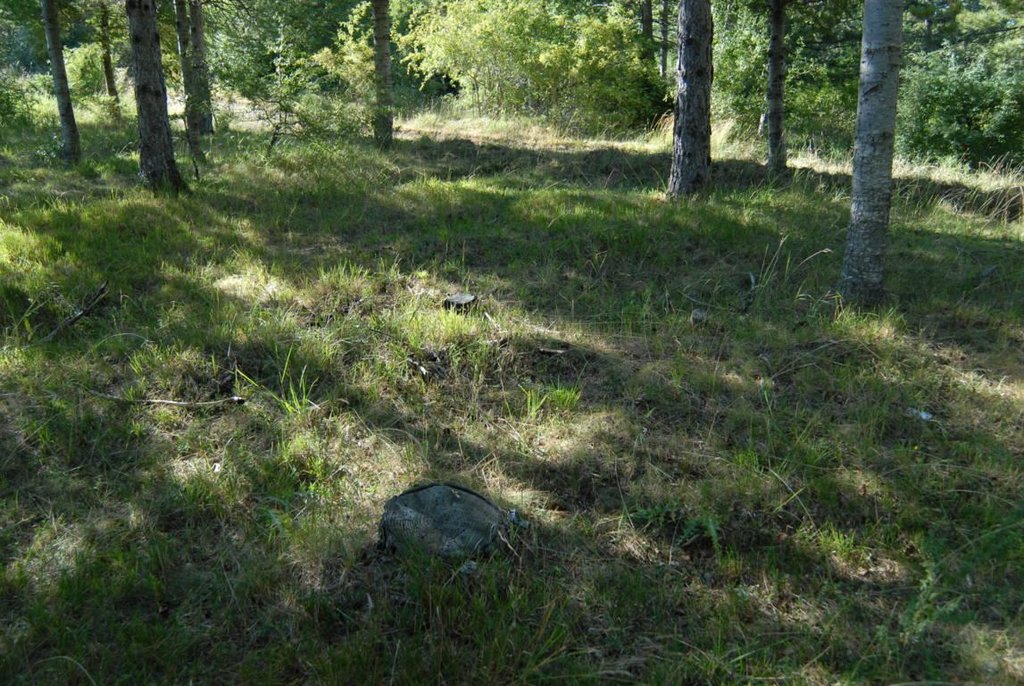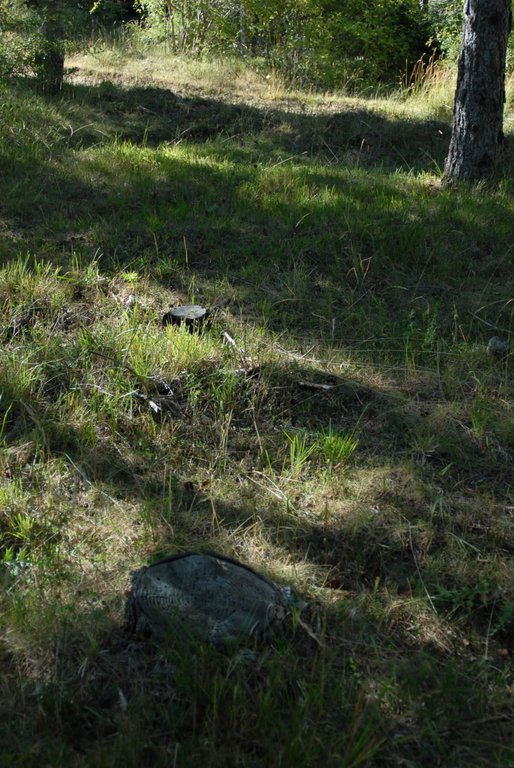SELECTIVE CUTTING [意大利]
- 创建:
- 更新:
- 编制者: Velia De Paola
- 编辑者: –
- 审查者: Fabian Ottiger, Alexandra Gavilano
technologies_1610 - 意大利
查看章节
全部展开 全部收起1. 一般信息
1.2 参与该技术评估和文件编制的资源人员和机构的联系方式
SLM专业人员:
Quaranta Giovanni
University of Basilicata
意大利
有助于对技术进行记录/评估的项目名称(如相关)
Catastrophic shifts in drylands (EU-CASCADE)有助于对技术进行记录/评估的机构名称(如相关)
University of Basilicata - 意大利1.3 关于使用通过WOCAT记录的数据的条件
编制者和关键资源人员接受有关使用通过WOCAT记录数据的条件。:
是
1.5 参考关于SLM方法(使用WOCAT记录的SLM方法)的调查问卷

Municipal forest management plan -MFMP (decade 2010-2019) [意大利]
Management plan for silvopastoral areas with a ten year intervention plan
- 编制者: Velia De Paola
2. SLM技术的说明
2.1 技术简介
技术定义:
SELECTIVE CUTTING OF FOREST TREES TO PREVENT FIRES AND AVOID THE RISK OF DAMAGED TREES FALLING DOWN.
2.2 技术的详细说明
说明:
The technique consists of cutting down and removing damaged trees from the forest (for example those damaged by snow) or dried trees, which tend to fuel fires and increase their spread.
Purpose of the Technology: Protection of woods in case of fire and promoting the natural regeneration of forests.
Establishment / maintenance activities and inputs: Clearing activities carried out periodically.
Natural / human environment: The technique is applied in timber forests. The context of production is characterised by a medium level of mechanisation (only the most demanding operations are carried out using mechanical means), the production system is essentially mixed, a small part is destined for personal consumption whilst the bulk of production is destined for local markets. The property is predominantly privately owned but also includes some public land, especially in the case of pasture land. Most farms in the area are livestock farms whilst the agricultural component is destined exclusively for private consumption.
2.3 技术照片
2.5 已应用该技术的、本评估所涵盖的国家/地区/地点
国家:
意大利
区域/州/省:
Basilicata
有关地点的进一步说明:
Castelsaraceno
具体说明该技术的分布:
- 均匀地分布在一个区域
如果不知道精确的区域,请注明大致覆盖的区域:
- 0.1-1 平方千米
2.6 实施日期
如果不知道确切的年份,请说明大概的日期:
- 50多年前(传统)
2.7 技术介绍
详细说明该技术是如何引入的:
- 作为传统系统的一部分(> 50 年)
3. SLM技术的分类
3.2 应用该技术的当前土地利用类型

森林/林地
- (半天然)天然森林/林地
(半天然)天然森林/林地:具体说明管理类型:
- 皆伐
产品和服务:
- 薪材
- 放牧/啃牧
- 娱乐/旅游
注释:
Major land use problems (compiler’s opinion): In the timber forests the presence of damaged trees promotes the spread of fires and the increase the risk of fallen trees.
Major land use problems (land users’ perception): Fire risk and risk of fallen trees.
Number of growing seasons per year: 1
Longest growing period in days: 120 Longest growing period from month to month: March to august
3.5 该技术所属的SLM组
- 天然和半天然森林管理
- Fire prevention
3.6 包含该技术的可持续土地管理措施

管理措施
- M7:其它
注释:
Main measures: management measures
Specification of other management measures: Reduction of risk of fire and better quliaty and value of forest.
3.7 该技术强调的主要土地退化类型

生物性退化
- Bf:火灾的有害影响
注释:
Main type of degradation addressed: Bf: detrimental effects of fires
Secondary causes of degradation: other human induced causes (specify) (Spontaneous combustion.), other natural causes (avalanches, volcanic eruptions, mud flows, highly susceptible natural resources, extreme topography, etc.) specify (Snow, estreme winter weather)
3.8 防止、减少或恢复土地退化
具体数量名该技术与土地退化有关的目标:
- 防止土地退化
- 修复/恢复严重退化的土地
注释:
Main goals: prevention of land degradation
Secondary goals: rehabilitation / reclamation of denuded land
4. 技术规范、实施活动、投入和成本
4.1 该技术的技术图纸
技术规范(与技术图纸相关):
Technical knowledge required for land users: low
Main technical functions: control of fires, reduction of dry material (fuel for wildfires)
Secondary technical functions: improvement of ground cover
Major change in timing of activities: Cutting of trees damaged or dead.
4.2 有关投入和成本计算的一般信息
其它/国家货币(具体说明):
euro
如相关,注明美元与当地货币的汇率(例如1美元=79.9巴西雷亚尔):1美元=:
0.74
注明雇用劳工的每日平均工资成本:
81.08
4.5 维护/经常性活动
| 活动 | 时间/频率 | |
|---|---|---|
| 1. | Cutting of trees damaged or dead by mechanical equipment (chainsaw). | Regularly |
4.6 维护/经常性活动所需要的费用和投入(每年)
| 对投入进行具体说明 | 单位 | 数量 | 单位成本 | 每项投入的总成本 | 土地使用者承担的成本% | |
|---|---|---|---|---|---|---|
| 劳动力 | Cutting of trees damaged or dead by mechanical equipment (chainsaw). | ha | 1.0 | 270.27 | 270.27 | 100.0 |
| 技术维护所需总成本 | 270.27 | |||||
| 技术维护总成本,美元 | 365.23 | |||||
注释:
Machinery/ tools: Hedge cutter
4.7 影响成本的最重要因素
描述影响成本的最决定性因素:
Manual labour and fuel for chainsaw.
5. 自然和人文环境
5.1 气候
年降雨量
- < 250毫米
- 251-500毫米
- 501-750毫米
- 751-1,000毫米
- 1,001-1,500毫米
- 1,501-2,000毫米
- 2,001-3,000毫米
- 3,001-4,000毫米
- > 4,000毫米
指定年平均降雨量(若已知),单位为mm:
1519.00
有关降雨的规范/注释:
68% in winter and 15% in summer
农业气候带
- 半湿润
Thermal climate class: temperate
5.2 地形
平均坡度:
- 水平(0-2%)
- 缓降(3-5%)
- 平缓(6-10%)
- 滚坡(11-15%)
- 崎岖(16-30%)
- 陡峭(31-60%)
- 非常陡峭(>60%)
地形:
- 高原/平原
- 山脊
- 山坡
- 山地斜坡
- 麓坡
- 谷底
垂直分布带:
- 0-100 m a.s.l.
- 101-500 m a.s.l.
- 501-1,000 m a.s.l.
- 1,001-1,500 m a.s.l.
- 1,501-2,000 m a.s.l.
- 2,001-2,500 m a.s.l.
- 2,501-3,000 m a.s.l.
- 3,001-4,000 m a.s.l.
- > 4,000 m a.s.l.
5.3 土壤
平均土层深度:
- 非常浅(0-20厘米)
- 浅(21-50厘米)
- 中等深度(51-80厘米)
- 深(81-120厘米)
- 非常深(> 120厘米)
土壤质地(表土):
- 细粒/重质(粘土)
表土有机质:
- 中(1-3%)
如有可能,附上完整的土壤描述或具体说明可用的信息,例如土壤类型、土壤酸碱度、阳离子交换能力、氮、盐度等。:
Soil fertility is medium-high
Soil drainage/infiltration is good
Soil water storage capacity is medium
5.4 水资源可用性和质量
地下水位表:
5-50米
地表水的可用性:
中等
水质(未处理):
良好饮用水
关于水质和水量的注释和进一步规范:
Availability of surface water: Medium (minimum during month of September and October)
5.5 生物多样性
物种多样性:
- 中等
5.6 应用该技术的土地使用者的特征
生产系统的市场定位:
- 商业/市场
非农收入:
- 收入的10-50%
相对财富水平:
- 平均水平
个人或集体:
- 个人/家庭
性别:
- 男人
说明土地使用者的其他有关特征:
Land users applying the Technology are mainly common / average land users
Difference in the involvement of women and men: active farmers are present only males; women are not actively involved in land management
Population density: 10-50 persons/km2
Annual population growth: negative; 2%
90% of the land users are average wealthy.
10% of the land users are poor.
5.7 应用该技术的土地使用者使用的平均土地面积
- < 0.5 公顷
- 0.5-1 公顷
- 1-2 公顷
- 2-5公顷
- 5-15公顷
- 15-50公顷
- 50-100公顷
- 100-500公顷
- 500-1,000公顷
- 1,000-10,000公顷
- > 10,000公顷
这被认为是小规模、中规模还是大规模的(参照当地实际情况)?:
- 小规模的
5.8 土地所有权、土地使用权和水使用权
土地所有权:
- 社区/村庄
- 个人,有命名
土地使用权:
- 社区(有组织)
- 个人
5.9 进入服务和基础设施的通道
健康:
- 贫瘠
- 适度的
- 好
教育:
- 贫瘠
- 适度的
- 好
技术援助:
- 贫瘠
- 适度的
- 好
就业(例如非农):
- 贫瘠
- 适度的
- 好
市场:
- 贫瘠
- 适度的
- 好
能源:
- 贫瘠
- 适度的
- 好
道路和交通:
- 贫瘠
- 适度的
- 好
饮用水和卫生设施:
- 贫瘠
- 适度的
- 好
金融服务:
- 贫瘠
- 适度的
- 好
6. 影响和结论性说明
6.1 该技术的现场影响
社会经济效应
生产
木材生产
生产故障风险
社会文化影响
文化机会
注释/具体说明:
Aesthetic value
Improved livelihoods and human well-being
生态影响
土壤
土壤有机物/地下C
注释/具体说明:
The trees harvested trees in the wood would contribute to increase the soil organic matter if left in place.
减少气候和灾害风险
火灾风险
其它生态影响
Hazard towards adverse events
6.2 该技术的场外影响已经显现
对邻近农田的破坏
对公共/私人基础设施的破坏
6.3 技术对渐变气候以及与气候相关的极端情况/灾害的暴露和敏感性(土地使用者认为的极端情况/灾害)
渐变气候
渐变气候
| 季节 | 增加或减少 | 该技术是如何应对的? | |
|---|---|---|---|
| 年温度 | 增加 | 好 |
气候有关的极端情况(灾害)
气象灾害
| 该技术是如何应对的? | |
|---|---|
| 局地暴雨 | 好 |
| 局地风暴 | 好 |
气候灾害
| 该技术是如何应对的? | |
|---|---|
| 干旱 | 好 |
水文灾害
| 该技术是如何应对的? | |
|---|---|
| 比较和缓的(河道)洪水 | 好 |
其他气候相关的后果
其他气候相关的后果
| 该技术是如何应对的? | |
|---|---|
| 缩短生长期 | 好 |
6.4 成本效益分析
技术收益与技术建立成本相比如何(从土地使用者的角度看)?
短期回报:
稍微积极
长期回报:
稍微积极
技术收益与技术维护成本/经常性成本相比如何(从土地使用者的角度看)?
短期回报:
积极
长期回报:
积极
注释:
The value of the wood harvested is higher than the costs of felling
6.5 技术采用
在所有采用这项技术的人当中,有多少人是自发的,即未获得任何物质奖励/付款?:
- 11-50%
注释:
50% of land user families have adopted the Technology with external material support
Comments on acceptance with external material support: Contributions through rural development measure (200 € per hectare)
50% of land user families have adopted the Technology without any external material support
There is a moderate trend towards spontaneous adoption of the Technology
6.7 该技术的优点/长处/机会
| 土地使用者眼中的长处/优势/机会 |
|---|
| The technique is useful particularly in areas nearest public roads to prevention the spread of wildfires and to decrease risk of damaged trees falling. |
| 编制者或其他关键资源人员认为的长处/优势/机会 |
|---|
|
Selective cutting of damaged trees is a useful tool in preventing the growing spread of wildfires and promotes a more homogenous and regular growth in the forest. How can they be sustained / enhanced? The resources forseen under the RDP to support this action have not led to the its spontaneous adoption. |
6.8 技术的弱点/缺点/风险及其克服方法
| 土地使用者认为的弱点/缺点/风险 | 如何克服它们? |
|---|---|
| There are no disadvantages to this technique. |
链接和模块
全部展开 全部收起链接

Municipal forest management plan -MFMP (decade 2010-2019) [意大利]
Management plan for silvopastoral areas with a ten year intervention plan
- 编制者: Velia De Paola
模块
无模块





